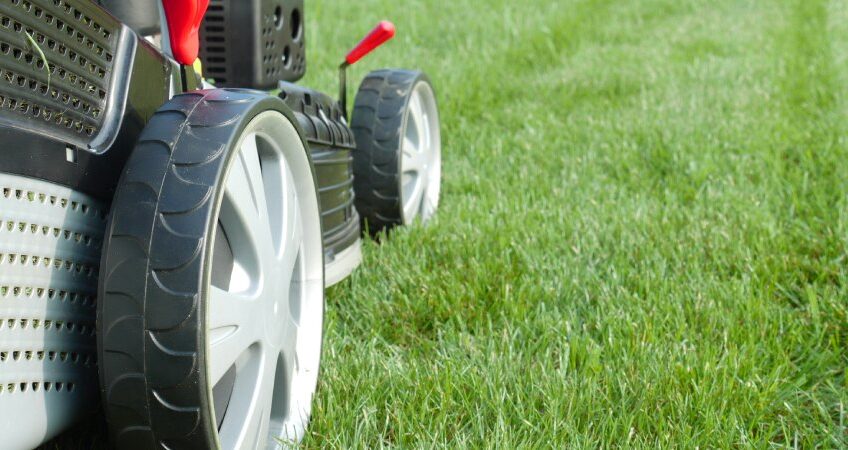Keeping your lawn mower running smoothly and out of the repair shop requires following basic maintenance procedures throughout the growing season.
Now, advice on maintaining your mower and other lawn and garden tools is just a few mouse clicks away: from the Lawn and Garden Advisor feature on the sears.com Web site. Tips found in the sears.com Lawn and Garden Advisor include:
LAWN-MOWER CARE
Clearing away small stumps, bricks, and other obstacles is one way to protect your mower from an early death, since hitting them with the blade is a common way to destroy these machines. Here’s what else you can do and when to do it:
WHEN THE MOWING SEASON BEGINS:
- For four-stroke gas mowers, check that the oil dipstick level is at or near the full mark. Add more, if necessary, but don’t overfill. Too little oil can damage or destroy the engine by leaving parts unlubricated; too much can also underlubricate by causing air bubbles.
- For two-stroke gas models, mix fresh gasoline and two-cycle oil according to the ratio recommended in the owner’s manual. Too little oil can damage the engine by underlubricating vital parts; too much can cause poor running, excess exhaust emissions, and fouled spark plugs.
- Hose or scrape off old clippings from beneath the mowing deck using a plastic putty knife immediately after each mowing. This way clippings do not dry to the deck, which makes them harder to remove. Caked-on clippings can compromise mulching and bagging by upsetting airflow beneath. Clippings can also corrode metal decks–one reason why mowers are replaced. Caution: On gas mowers, disconnect the spark-plug wire first.
- Check a gas mower’s pull-start cord and replace it if it’s frayed.
- Check an electric mower’s power cord and replace it if it shows cracks or other damage.
- Have any mower’s blade sharpened if you didn’t do it before winter storage. Blades should be sharpened at least once each mowing season to cut evenly and avoid tearing the grass.
DURING THE MOWING SEASON:
- Hose or scrape off old clippings from beneath the deck.
- Remove grass and debris from a gas engine’s cooling fins, engine covers, and air-intake screens after each use to help prevent engine overheating.
- If your mower has a manual engine-speed control, be sure it’s properly adjusted.
- Regularly check belts/chain drives for wear and tightness.
BEFORE WINTER STORAGE:
- Add stabilizer to a gas mower’s fuel tank at the end of the mowing season. Let the engine run until fuel runs out.
- Remove a gas engine’s spark plug and pour an ounce of oil into the cylinder. Slowly pull the starter cord to distribute the oil on moving parts and help prevent rust. Then reinstall the plug.
- Replace the spark plug every 100 hours of operation (roughly every four years). Have the blade sharpened.
- Replace a gas engine’s carburetor air filter if it’s paper. Wash foam filters in soap and water, rinse and squeeze dry, then oil with engine oil and squeeze dry again before reinstalling.
- Replace old engine oil on four-stroke engines and properly dispose of it at a collection center. Two-stroke engines don’t require this, since they burn a small amount of oil with the gas.
- Fold the handlebar to save space, then store the mower in a dry, ventilated area. On concrete floors, put plastic beneath the mower to help prevent moisture from corroding the deck.
If You need help, Call Us or send a message.

